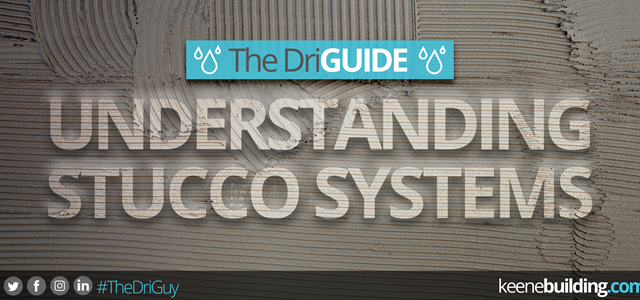
THREE, TWO, OR ONE-COAT STUCCO— WHAT’S THE DIFFERENCE?
Frequently the question is asked about stucco applications and what the difference is between one-coat, two-coat or three-coat stucco systems. A good place to start is to define what is meant by the word “coat” as it relates to stucco. A coat is defined as “a layer or thickness of stucco applied in a single operation.”
The purpose of this blog is to define the differences and not to choose one over the other as they all have their place. The success of either choice is based on the use of quality material and application procedures installed by trained professionals.
THREE-COAT CONVENTIONAL STUCCO SYSTEM:
Lath - Weep Screed, Paper, and Wire
The lath used in this particular system is very basic and consists of a weather resistive barrier, metal wire and some other accessories, such as weep screed, corner aid and plaster stop.
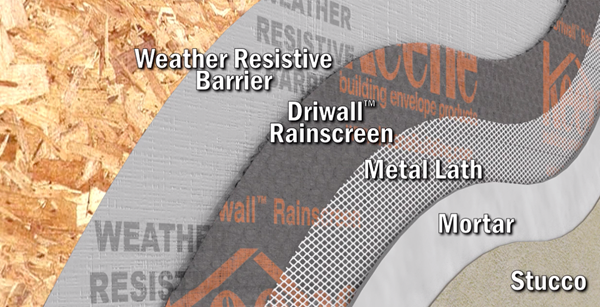 Recommended Products:
Recommended Products:
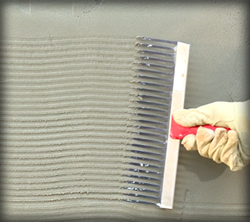
Scratch Coat (3/8")
The scratch coat is a base coat and the first one to go on the wall. It is applied with a hawk and trowel and a scratcher. The cement is spread evenly among the surface at a depth of about 3/8 of an inch thick. After the cement is on the wall, a scratcher is used to make horizontal lines in the stucco mix, in order for the next coat (the brown coat) to stick to it.
This process can take some time and patience, but is not too difficult to do. In fact, it is the easiest process out of all of the base/finish coats.
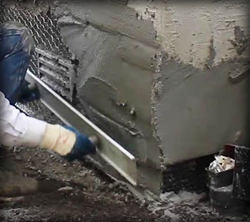
Brown Coat (3/8")
The second of the three-coat application, this coat is applied using the same techniques that were used on the scratch coat. Rather than a scratcher, an instrument called a darby is used instead.
A “darby” is really just a three foot long trowel with two handles mounted on it so the user can grip it firmly. The darby pushes the cement around to make sure the brown coat is even and uniform. Like the scratch coat, this coat is also roughly 3/8" thick.
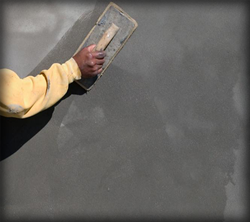
Finish Coat (1/8")
The final step in the process, the finish coat, or top coat, is usually applied with a hawk and trowel (depending on the finish).
Because it is considered the "decorative" surface, it is often colored and textured either with a cement-based finish or an acrylic finish.
TWO-COAT STUCCO (ASTM C 926):
Typically over a solid plaster base of unit masonry or pre-cast or cast in place concrete with a 3/8-inch scratch, 1/8-inch brown and 1/8-inch finish coat for a total thickness of 5/8-inch (applied directly to the solid plaster base without lath).
Both three-coat and two-coat ASTM C 926 stucco applications are recognized in the building code and have a long track record of successful applications.
ONE-COAT STUCCO SYSTEM:
A more non-traditional option which does not meet the above ASTM standard, one-coat stucco systems are considered by the International Building Code as an alternative wall cladding. These systems are proprietary and were developed due to the energy crisis of the seventies, where buildings in the Southwestern part of the United States were required to increase the R value of all exterior walls. These one-coat systems can incorporate tongue and groove insulation board over sheathing or open framing. All such alternate systems require a special evaluation service report based upon Acceptance Criteria for Cementitious Exterior Wall Coatings, published by the International Code Council.
COATING COMPLIANCE
While both one-coat and three-coat materials can be either hand applied or pumped to the wall using specialized equipment, there are some advantages to installing one-coat proprietary systems. Typical one-coat stucco materials that go through the process to comply to Acceptance Criteria for Cementitious Exterior Wall Coatings have additional crack inhibiting fibers and proprietary ingredients that reduce or minimize shrinkage cracking. The one-coat stucco properties evaluated are structural, durability, fire resistance ratings and the types of construction (I through IV non-combustible construction) the material can be installed on.
One-coat stucco is quicker to apply using a reduced amount of material and labor. Another benefit is that one-coat stucco is a method of installation that should make stucco applications much easier to comply with the new ASHRAE 90.1 energy standard since the base coats are much lighter and thinner by virtue of the 3/8- to 1/2- nominal thicknesses, reducing the weight of the stucco assembly when applied over extruded or expanded polystyrene insulation to meet the requirements of ASHRAE 90.1.
When one-coat proprietary stucco is specified, make sure the material you are using has an Evaluation Service Report number. The ESR number will refer to a report that verifies that the material selected has been tested and complies with the Acceptance Criteria of AC 11. The material selected will also indicate that the material complies with AC 11 by having an ESR number posted on the packaging. The selected material will also have an ESR that can be used for reference of compliance. One-coat stuccoes without an ESR number have not been through the compliance of AC 11 and therefore the risk is that they would not be code compliant.
CONCLUSION
The popularity of stucco continues to grow as a wall cladding system for a number of reasons. No matter what coating option you choose for your application, using stucco comes with a guarantee that it will be relatively low in maintenance, visually pleasing, and can be installed economically across the country.
To see a full demonstration of the application of stucco using some of our Driwall™products, you can watch our Live Demonstration from "Stucco Live" at World of Concrete 2020.